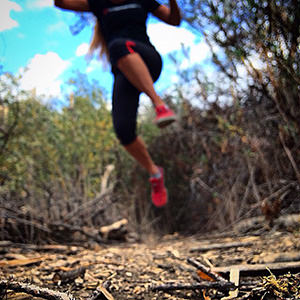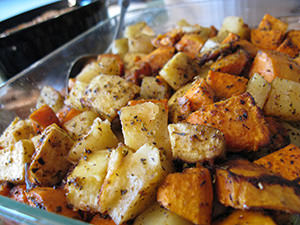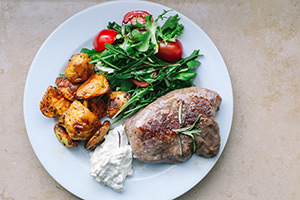
Is The Paleo Diet Suitable For Runners?
Posted on 14 Oct, 2019

The Paleo diet has taken off in recent years, backed by the thinking that eating like our Paleolithic ancestors might reverse climbing rates of obesity, diabetes, and cardiovascular disease. The diet prescribes just lean protein, healthy fat, and fresh fruits and vegetables. Dairy, grains, legumes, and refined and processed food are completely avoided.
Modern grains that are used to make bread, pancakes, pasta, or chow mein had not been present for 99.6 percent of our evolutionary history. Humans first began cultivating these grains just 10,000 years ago--a blink of evolutionary time, too short for our digestive systems to adapt so it can process these foods healthfully.
To paleo supporters, grains are the original fast food--cheap, easy to obtain, overly processed, and utterly bad for you.
The Case For Paleo And Running
 Carbohydrates are essential for long-distance running. But some runners today believe that relying on fat might help their performance. The idea is that adopting a low-carbohydrate, high-fat diet (like the Paleo diet) forces our bodies to use fat as fuel. Fat as an energy source is more efficient and comes with less blood sugar fluctuations, allowing us to go farther without tiring. It is said that humans in the Paleolithic era got 55 percent of their daily calories from meat, and had no trouble covering almost 10 miles a day tracking down their dinner.
Carbohydrates are essential for long-distance running. But some runners today believe that relying on fat might help their performance. The idea is that adopting a low-carbohydrate, high-fat diet (like the Paleo diet) forces our bodies to use fat as fuel. Fat as an energy source is more efficient and comes with less blood sugar fluctuations, allowing us to go farther without tiring. It is said that humans in the Paleolithic era got 55 percent of their daily calories from meat, and had no trouble covering almost 10 miles a day tracking down their dinner.
With Paleo, even though you are lowering your carb intake, the carbs you do eat will come largely from fruits and veggies, so you'll be swimming in healthful micronutrients. This affords athletes better long-term recovery than a standard high-starch and sugar diet, and it allows for training with a greater stress load.
A few months after adopting a Paleo diet, ultrarunner Timothy Olson set a new course record at the 2012 Western States 100-Mile Endurance Run. According to him, his legs got less swollen after going Paleo, and he could go hard again sooner after a really long run.
How The Paleo Diet Could Hurt Your Running
 In its strictest sense, the Paleo diet is too low in carbs for runners training hard. While most Paleo athletes eat lean protein and fresh fruits and vegetables, many still rely heavily on grains, processed sugars and lots of starches.
In its strictest sense, the Paleo diet is too low in carbs for runners training hard. While most Paleo athletes eat lean protein and fresh fruits and vegetables, many still rely heavily on grains, processed sugars and lots of starches.
Prehistoric hunters who chased their prey didn’t run that fast; they often did a combination of running and walking and would definitely not qualify for Boston.
The idea that fat may be used as an efficient fuel source may only be better for ultra-length races. As speed increases, carbohydrates become vital. If you want to run long and fast, lots of carbohydrates are required.
Olson, who won Western States, needed more midrun carbs to prevent him from bonking on endurance runs. He tried honey, dates, and dried fruit (which are not Paleo-approved), and ultimately found that energy gels worked best for him.
Recommended Adjustments For Runners
 The foods in a Paleo diets are just too low on the glycemic index to replace glycogen mid- and postrun as quickly as most athletes would like. That means, for runners who want to make Paleo work, some alterations may be necessary.
The foods in a Paleo diets are just too low on the glycemic index to replace glycogen mid- and postrun as quickly as most athletes would like. That means, for runners who want to make Paleo work, some alterations may be necessary.
The key is dividing an athlete’s diet into stages.
During most of an athlete’s meals the basic Paleo diet should be followed, but before, during and immediately after workouts some adjustments could be needed.
About two hours prior to a long or hard workout or race, an athlete should eat food with a low to moderate glycemic index and low fiber content.
During an extended athletic event or race, most athletes will still need quickly-processed carbohydrates in the form of sports drink or gels. During short events less than an hour, an athlete can drink just water.
The few hours after hard exercise is the time to focus on carbohydrates and to possibly eat non-Paleo — starchy foods like bagels, yams or pasta — because the high glucose is needed for the recovery process.
The problem with breaking from the Paleo diet momentarily is that it sometimes leads to binge habits, and you’ll end up over-consuming the foods you’ve been denying yourself.
Final Word
 Some runners fall off the wagon because they feel inadequately fueled on the program. Many, however, learn valuable lessons in the process, and end up snacking healthier and eating more fruits and vegetables than they did before. Such retraining may be the Paleo diet's greatest value. Paleo provides a structure to a healthy diet, and gives you the handrails to cut back on refined sugars, excessive alcohol, and additive-laden junk food.
Some runners fall off the wagon because they feel inadequately fueled on the program. Many, however, learn valuable lessons in the process, and end up snacking healthier and eating more fruits and vegetables than they did before. Such retraining may be the Paleo diet's greatest value. Paleo provides a structure to a healthy diet, and gives you the handrails to cut back on refined sugars, excessive alcohol, and additive-laden junk food.
All of which makes you faster in the long run.
Photo Credits
Great Books On Nutrition For Runners

by Joanna Sayago Golub

by Shalane Flanagan

by Joanna Sayago Golub

by Matt Fitzgerald

 How To Run Downhill
How To Run Downhill The Benefits Of High Intensity Interval Training
The Benefits Of High Intensity Interval Training Can You Be Vegetarian And Still Compete On A World Class Level?
Can You Be Vegetarian And Still Compete On A World Class Level? Will Running Ruin Your Knees?
Will Running Ruin Your Knees?










